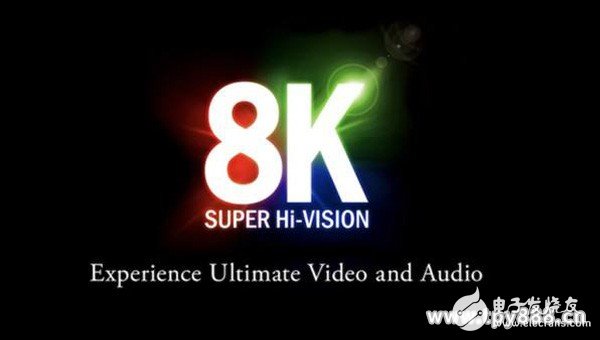Recently, the display industry has seen two major developments. The first is IHS Markit's prediction that 8K TV displays will make their market debut in 2018, marking it as the first year of 8K adoption. Ricky Park, director at IHS Markit, stated, "Since Ultra HD has rapidly replaced Full HD in the large-screen TV market, panel manufacturers are now offering higher-resolution differentiated products. In 2018, it will become the first year for 8K resolution TVs."
Coincidentally, this year’s CES showcased several leading companies entering a sleek mode, with a wide range of new technologies and products on display. Among them, 8K technology stood out as the most anticipated innovation. While many people have been excited about 8K for years, even though I myself haven't used 4K yet, the announcement that Japan would broadcast the 2020 Olympics in 8K resolution has sparked my own interest in the technology.

The emergence of 8K brings significant opportunities to the security industry. It is well known that higher resolution is an ongoing pursuit in the field. If 8K can be integrated into security systems, it could bring a technological revolution.
For the security industry, the main advantage of higher display technology is clearer images with more detailed information. These enhanced visuals align perfectly with the growing demand for intelligent surveillance. From a vendor perspective, clearer images and richer details offer greater analytical value, which translates into more market opportunities.
The detailed content of 8K screens allows different departments to share information efficiently. In a single scene, there's no need to install multiple cameras to cover different areas, which reduces costs. It also enables a more accurate restoration of real-world details. Even during unexpected events, different departments can use the same camera to identify points of interest. With multi-stage zooming, high-definition details remain clear, allowing monitoring under all weather conditions and scenarios without changing the number of cameras or angles. This makes 8K particularly suitable for applications like smart cities, highways, airports, and train stations.
However, is 2018 really the first year for 8K? Is the time right for its widespread adoption? Especially in the security sector, is it too early? To answer these questions, we need to look at the basis of IHS Markit’s claim that 2018 will be the first year of 8K TV display.
According to market data, ultra-high-definition panels accounted for over 98% of the 60-inch and larger display market in 2017. IHS estimates that in 2018, TV panel suppliers plan to mass-produce 8K (7680×4320) displays, making up around 1% of the 60-inch and larger market. By 2020, this is expected to rise to 9%. Therefore, 2018 is considered the first year of 8K resolution TV displays.
IHS analysts believe that due to the popularity of UHD in the large-screen TV market, panel makers are increasing the availability of higher-resolution products to drive profit margins through premium offerings.
Supply-side data supports this view. In 2017, the China Taiwan Group began developing 8K panels and launched the first 8K LCD TV in the fourth quarter of the year. These screens were initially supplied to Sharp and Chinese brands. Sharp also produced the first 70-inch 8K LCD TV in the same period. In 2018, Samsung and Sony are expected to lead the 8K market, while BOE and CLP Panda are planning to develop 8K LCD panels in the second half of the year.
Based on these developments, especially the plans from major display companies in 2018, it seems that 8K is just around the corner. However, commercialization of a new technology is not just a technical leap. While we may not discuss video sources or transmission in the consumer market, looking at 8K in the security industry reveals that the transition is not easy.
8K application involves the entire industrial chain—from lenses and sensors to encoding, storage, and backend display devices. Only when all aspects of the industry are ready can 8K truly find its place. Although some progress has been made in storage and encoding, limitations in decoding and display devices still restrict 8K implementation. Additionally, the high bandwidth required for transmission and physical pixel constraints on display devices remain challenges. Even 4K, which is already available, hasn’t fully resolved these issues.
Cost is another major obstacle. Implementing 8K means higher-resolution video files, which require better transmission technology and increased bandwidth. This leads to more network upgrades and higher storage demands, such as managing massive data, efficient querying, load balancing, and backup systems. These challenges significantly increase costs. As video surveillance systems enter an era of data explosion, the demand for efficient storage and analysis becomes even more critical.
Market acceptance is also a big issue. While clarity is a universal desire, it doesn’t mean the market will easily adopt 8K. Despite the potential opportunities for the security industry, consumers and businesses have shown caution toward higher-resolution technology. 4K, for example, has had a long and turbulent journey before gaining traction. Many problems remain unsolved, and large-scale adoption is still far off. Consumers care about the price-to-performance ratio, and businesses must find affordable ways to implement 8K. This process takes time.
In summary, while 8K technology is advancing rapidly and many are optimistic about its commercial potential, a more rational analysis shows that it’s still too early to talk about full-scale 8K applications, especially in the security industry.
However, this doesn’t mean I dismiss the value of 8K. Human desire for clearer images is endless, and the trend toward higher definition in the security industry is inevitable. 8K represents a new era for the security sector. While commercialization may take time, it’s unlikely to arrive in 2018, at least not in the way many expect.
Battery Charger,ebike battery charger,ebike charger,water purifier charger
FOSHAN SHUNDE KELICHENG POWER SUPPLY TECHNOLOGY CO., LTD , https://www.kelicpower.com
